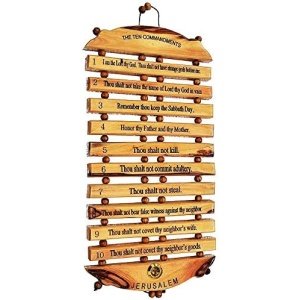- MyFaith News Channel
Lee Strobel: 4 razones convincentes para creer que la resurrección realmente sucedió
Al mismo tiempo que un ateo, entendí una cosa sobre el cristianismo: se eleva o cae en la resurrección de Jesús.
Al menos, cualquiera puede susurrar para ser divino, como lo hizo Jesús heterosexual y ahora ya no es recto. Pero si Jesús predijo que moriría y se elevaría una vez más tres días después, y luego lo hiciera, eso sería evidencia correcta resplandeciente de que solía contar la realidad sobre su identidad. En numerosas palabras, Pascua es el juego de pelota.
Como periodista educado en la ley en el Tribune de ChicagoAdemás, sabía una otra cosa: inimaginativo, nuestros cuerpos se interrumpen sin imaginación. Había considerado un grupo total de cadáveres en algún momento de mi profesión como reportero, y ninguno de ellos recuperó la vida, especialmente después de tres días.
Así que pensé que es millas sin complicaciones para refutar la resurrección y, por lo tanto, liberar a mi esposa de su nueva fe en Cristo. Dame un fin de semana, le dije, y podré triturar el susurro central del cristianismo.
Sabiamente, no fue tan sencillo.
Fuentes fuera de puerta de la Biblia determinan que Jesús solía ser llevado a cabo
Tal vez, creí, Jesús nunca si la verdad se diga murió en el malcriado cuando los cuatro Evangelios susurran. Pero lamentablemente para mí, la evidencia para la ejecución de Jesús es tan intensiva que incluso la testomonía contemporánea atea alumno Gerd Lüdemann lo llama “indiscutible”.
Eso está en el mito de que ahora ya no más efectivos ocupamos un par de relatos tempranos de la pérdida de vida de Jesús en la testomonía contemporánea, pero además tenemos 5 fuentes débiles fuera de la puerta la Biblia que verifica su ejecución.
No es de extrañar que el estudio sobre revisión Revista de la afiliación científica estadounidense concluyó: “Claramente, la carga de la evidencia histórica y científica indica que Jesús solía ser inimaginativo antes que el daño a su aspecto solía ser infligido”.
Los datos de registros se desarrollan inmediatamente
Mi siguiente línea de protección solía ser narrar la resurrección es un mito. Pero me di cuenta de que el conocido historiador clásico que un Sherwin-White de Oxford declaró que tardó más de dos generaciones en el mundo débil para que las leyendas proporcionaran y eliminen un núcleo sólido de realidad histórica.
Pero ahora ocupamos un archivo de la Resurrección, preservado en 1 Corintios 15: 3-7, que viene demasiado rápido después de la pérdida de vida de Jesús para que se le entregue un mito. De hecho, el alumno James Dunn declaró “estaremos completamente seguros” de que este archivo solía formarse dentro de meses de la pérdida de vida de Jesús. Y ahora ese ya no es el archivo temprano que más involucra más que ocupamos. Los cuatro evangelios ganan otros que datan de la mano de una generación de Jesús.
La tumba solía estar vacía
Mi tercer plan solía ser robar una mirada para socavar la tumba vacía, hasta que descubrí que incluso los oponentes de Jesús admitían implícitamente la tumba solía estar vacía en esa primera mañana de Pascua.
Presumiblemente, razoné, el físico solía ser enterrado en el objetivo crítico. Si es decir la verdad, ocupa los escépticos escuchados susurros de que los romanos no permitieron el entierro de las víctimas de crucifixión.
En la mano sintética, el Digerirun resumen de la ley romana, dice: “Nuestros cuerpos de otras personas que fueron castigadas siempre deben entregarse a quien los solicite a los efectos del entierro”. De hecho, en 1968 los arqueólogos encontraron los restos enterrados de una víctima de crucifixión con la espiga en silencio a través de su tobillo.
Hay cuentas de estampas de abojo
En la rotura, me centré en testigos oculares. Si bien es más efectivo ocupamos una o dos fuentes durante lo que todas las personas conocen de la previa histórica anterior, ahora ocupamos nueve Fuentes débiles —interior y fuera de la puerta la testomonía contemporánea, confirmando el testimonio de los discípulos que encontraron al Jesús resucitado.
¿Podrían alucinar o experimentar visiones generadas por el dolor de su líder? Sin dibujo, me dijeron psicólogos. Las alucinaciones son deseos aprecios: ocurren en las mentes individuales. Nuestro primer archivo de la Resurrección dice que otras 500 personas lo vieron en el momento similar. “Eso corre el riesgo de ser un milagro más grande que la resurrección misma”, me dijo uno educado.
Además, el perseguidor cristiano Saulo de Tarso no estaba psicológicamente preparado para ocupar una visión del Cristo resucitado. Ninguno de los dos solía ser James, el medio hermano de Jesús, que solía ser un escama en algún momento de la vida de Jesús. Ambos murieron, sin embargo, como líderes de la iglesia, ¿por qué? Por la razón que resucitó a Jesús los había mirado.
En la rotura, llegué a mi veredicto: la evidencia de la resurrección de Jesús solía asegurarse y convincente. Es por eso que me arrepintí de mis pecados y lo obtuve como mi perdón y líder el 8 de noviembre de 1981. En el destrozado, miraría mi moral, visión del mundo, matrimonio e incluso mi profesión, transformaría qué habilidad.
A medida que se acerca la Pascua, debemos recordarnos que los milagros no son más efectivos que es probable que lo imaginen, pero son estables. Y no hay milagro mucho más que la pérdida de vida de Jesús en los mimados, y su resurrección de lo poco imaginativo, por lo que demostró su identidad como el hijo extraño de Dios.
Para el cristianismo, esto, si es decir la verdad, es el juego de pelota.
Share:
Top rated products
-

-

Holy Anointing Oil from Jerusalem 300ml / 10.1 oz
Rated 5.00 out of 5$11.30Original price was: $11.30.$10.90Current price is: $10.90. -

-
 Rated 5.00 out of 5$24.25
Rated 5.00 out of 5$24.25 -

Passion of Christ 12" Authentic Real Fresh Jesus Crown of Thorns from The Holy Land
Rated 5.00 out of 5$33.80Original price was: $33.80.$26.30Current price is: $26.30.
Related Articles
Lo que la frase es que Cristo realmente significa
¿Crees en la afirmación más escandalosa de Jesús?
¿Estás emocionado por vivir para siempre?
Cuando los presidentes predican: 2 Easters, 2 mensajes muy diferentes
El sitio de crowdfunding Christian Givendgo defiende la campaña de anfitrión para Karmelo Anthony
Copyright
Copyright 2025 – MyFaith.Shop
By using this website you agree to our Privacy Policy.











